Do you know that line from
Star Wars: The Empire Strikes Back, when Han Solo is running toward the
Millennium Falcon with C3PO trailing behind? Han yells back down an icy tunnel as it caves in, “Hurry up, Goldenrod, or you’re going to be a permanent resident!” I know it sounds odd, but every time I see a goldenrod plant in bloom, I think about
Star Wars.
Now, if only we could bring the film and the plant together, we might have a great marketing plan for a too-often-maligned, super-pollinator-benefiting plant that does not cause hay fever (the pollen is too sticky to be carried by wind, unlike ragweed pollen). Too often all goldenrods are lumped together under the invasive/aggressive/weedy heading. Not only are there better-behaved choices out there, but goldenrod is absolutely essential for supporting insect pollinators like bees and butterflies, among others.
Now is the time to think about these late-summer or fall plants and get them in the ground for the autumn show. Shall we look at some lovely native C3POs — er, I mean goldenrods?
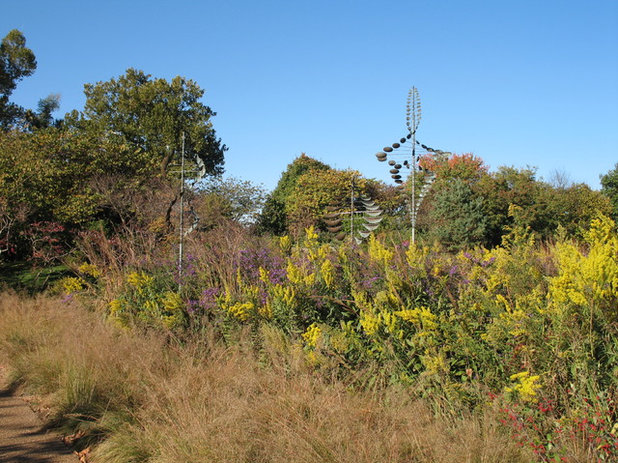
Missouri Botanical Garden
Showy Goldenrod (
Solidago speciosa)
Native from the Rockies all the way east
You’re probably most familiar with this 3-foot-tall, dryness-loving, sun-preferring goldenrod, as it spreads liberally by rhizomes. (It’s the most aggressive on my list, best suited for very large areas.) Many of the insects that benefit from goldenrod — flies, bees, wasps, moths, butterflies etc. — are either migrating or getting ready to overwinter when goldenrods are in bloom, so supporting them is even more important than you might imagine. Having a few acres of goldenrod doesn’t mean you have a weed problem — it means you’re feeding the world.
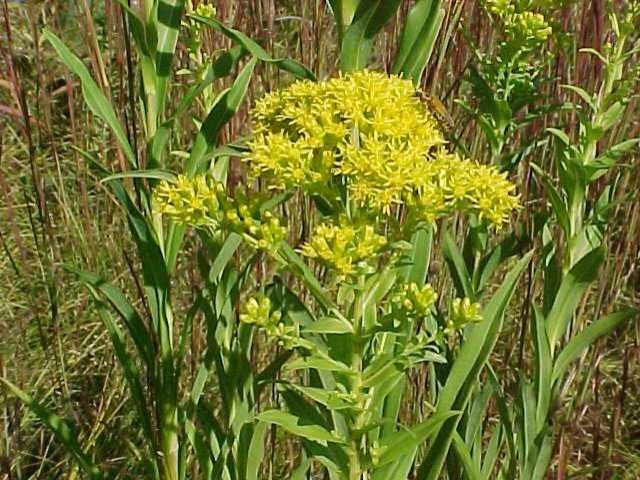
Missouri Botanical Garden
Riddell’s Goldenrod (
Solidago riddellii)
Native from Missouri up to Minnesota, then back over into Ohio
This northern Midwest native looks more like a grass when not in bloom. Preferring medium to wet soils that are alkaline (clay is good) in full sun, it will reach 3 feet tall and 1 foot to 2 feet wide in optimal growing conditions. It’s a perfect plant for a rain garden or dry streambed.
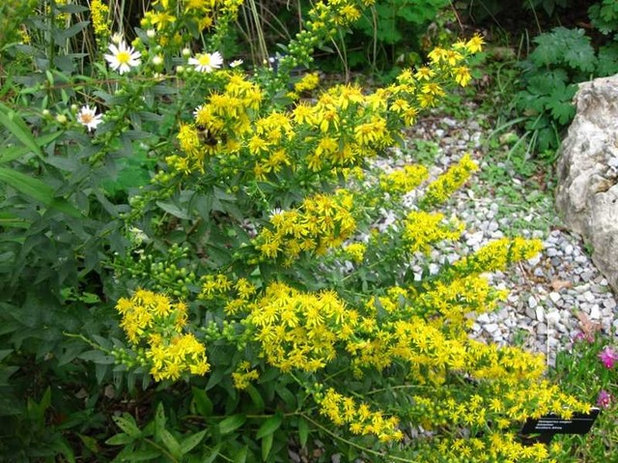
Missouri Botanical Garden
Goldenrod ‘Wichita Mountains’(
Solidago ‘Wichita Mountains’)
This is a selection collected from seed in the Wichita Mountains of southwestern Oklahoma — which is not too far from where I grew up, so it holds a special place in my garden. With bottlebrush blooms, Wichita Mountains will bloom well past frost and several freezes; it’s about the last plant in bloom in my garden. Reaching 3 feet tall by 3 feet wide and preferring dry soil in full sun, it is a fine clumper that won’t spread (which I think is unfortunate).
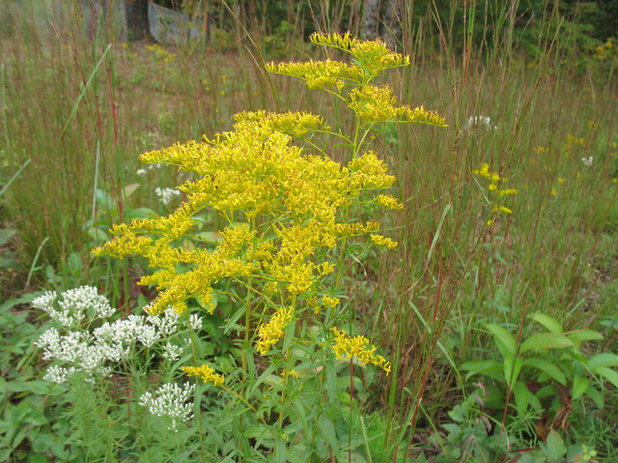 Anise-Scented Goldenrod
Anise-Scented Goldenrod (
Solidago odora)
Native to the southern Plains, the Southeast and New England
Like the smell of licorice? When crushed or rubbed between fingers, the leaves of this goldenrod smell divine and make a good tea. It will reach about 3 feet tall and 2 feet wide in full sun to partial shade in dry soils. Anise-scented goldenrod is also one of the easier species to keep in check for smaller gardens.
Photo by Ellen Honeycutt
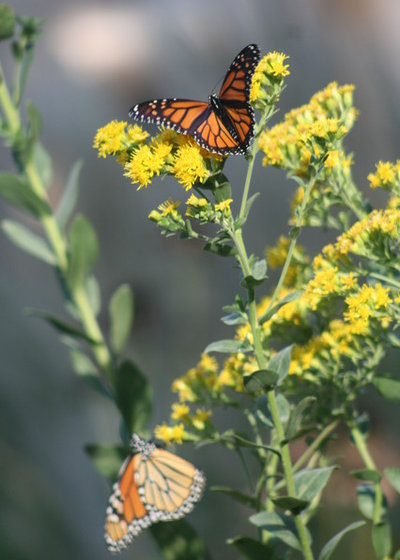
Benjamin Vogt / Monarch Gardens
Stiff Goldenrod (
Solidago rigida)
Native from the Plains to the East Coast
Despite its common name, stiff goldenrod is actually quite personable and lively. Favored by monarchs on their migration south in late summer and early fall, it will reach 3 to 4 feet tall and 1 foot to 2 feet wide in full sun and dry soil. In open soil it can spread by seed moderately, but in my dense, mulched garden I’ve had only one or two seedlings in seven years.
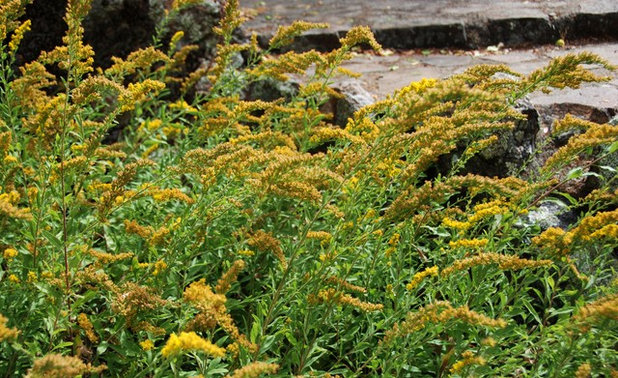
Pete Veilleux, East Bay Wilds
California Goldenrod (
Solidago californica)
Native to southwest Oregon and almost all of California
With somewhat fuzzy gray leaves and stems, California goldenrod grows best in full sun, in soils from moist to dry. It reaches 3 to 4 feet tall and has individual stalks holding up clusters of blooms. It does spread by rhizomes but is reported to be easy to uproot where unwanted.
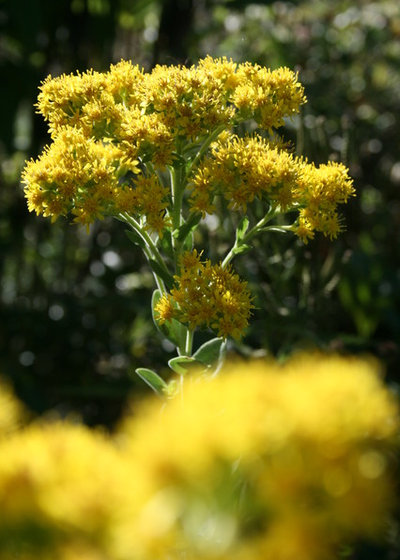
Benjamin Vogt / Monarch Gardens
There are more than 100 species of goldenrod, and I’ve highlighted only a very few to whet your appetite. There are the shade-loving
zig zag goldenrod (
S. flexicaulis), the alpine
Rocky Mountain goldenrod (
S. multiradiata) and
elm-leaved goldenrod (
S. ulmifolia) too.
Look out for action by predators, especially the goldenrod spider, which is a member of the crab spider family. Count how many species of insects you see in 15 minutes on a sunny day (it’ll be a lot).
Most important, don’t shun a group of diverse species because you’ve been taught they’re weeds — there are many well-behaved goldenrods; none are responsible for hay fever allergies; and they are absolutely essential to a healthy landscape on both sides of the garden fence. Oh, and they’re gorgeous, especially planted in drifts. Make them a permanent resident in your garden.
More: Why Aggressive Plants Might Actually Be Your Friends





